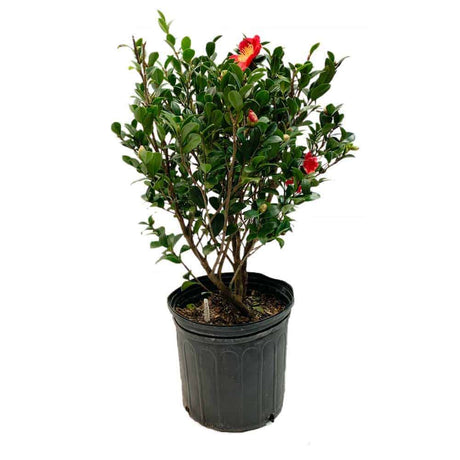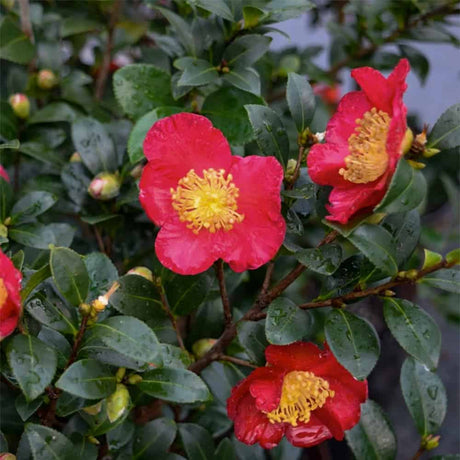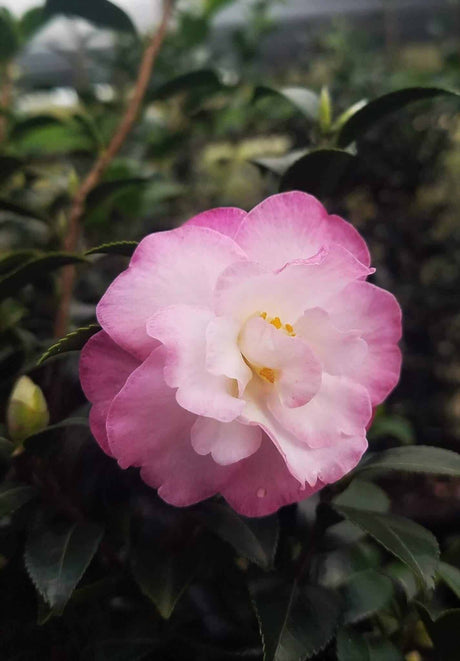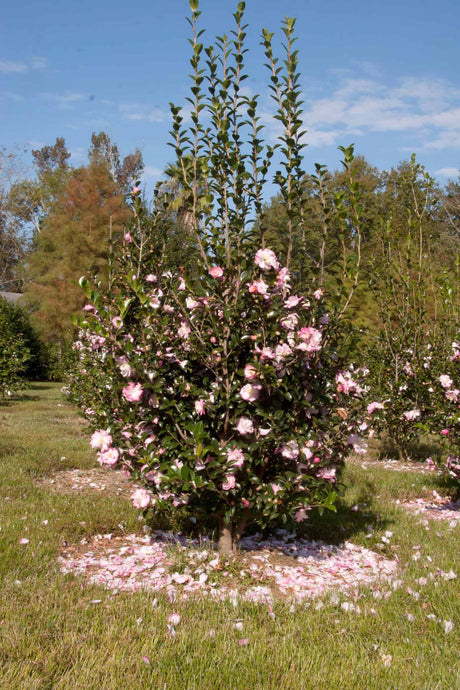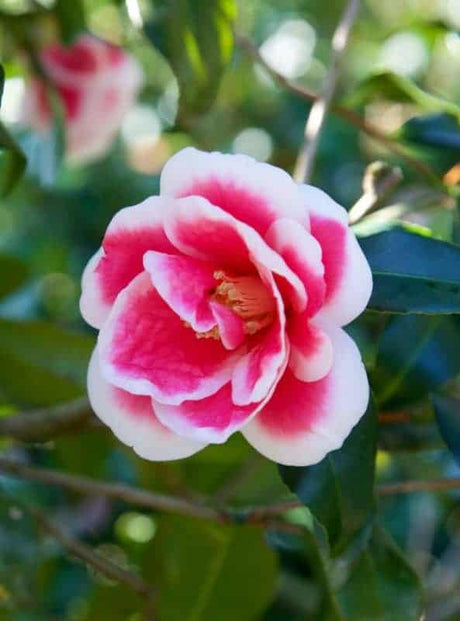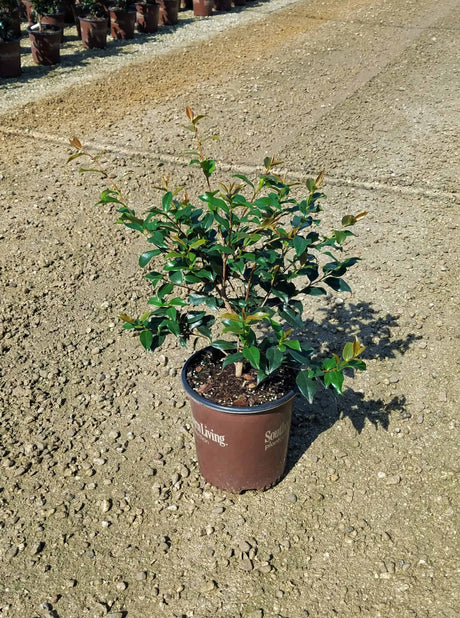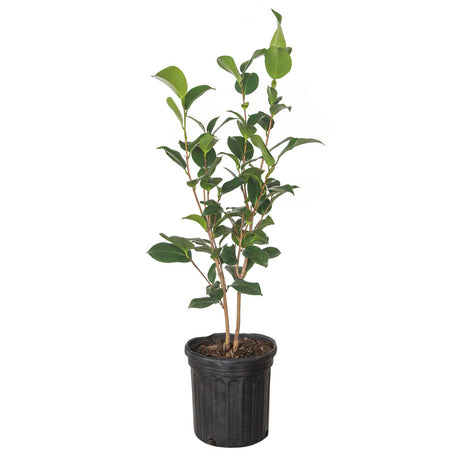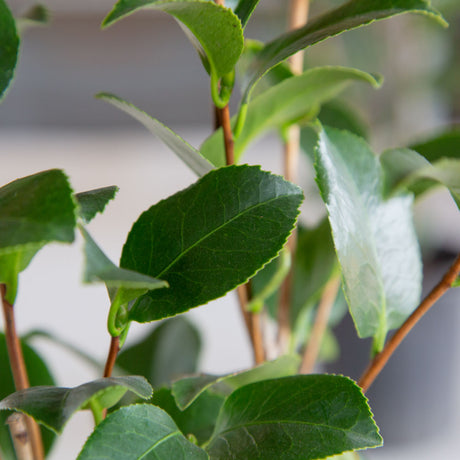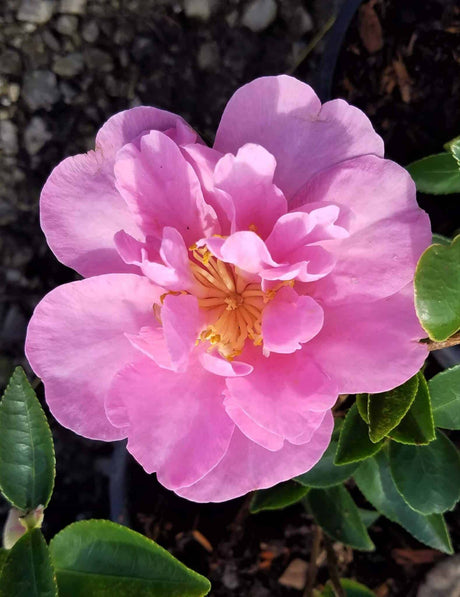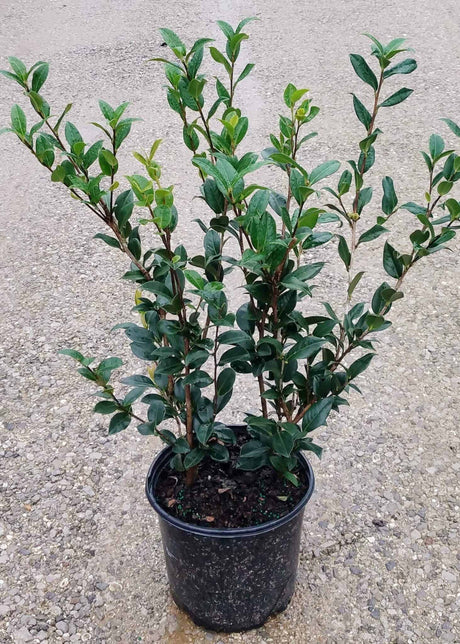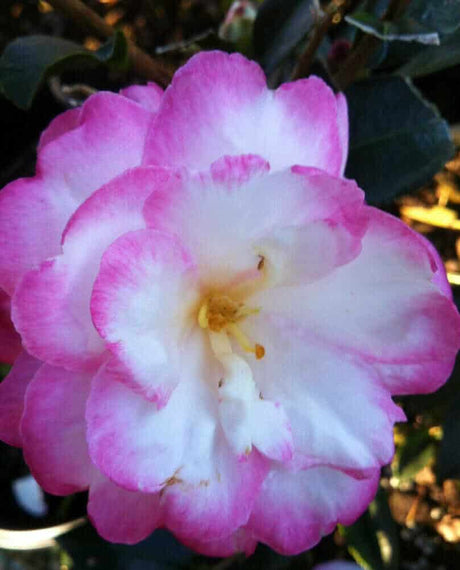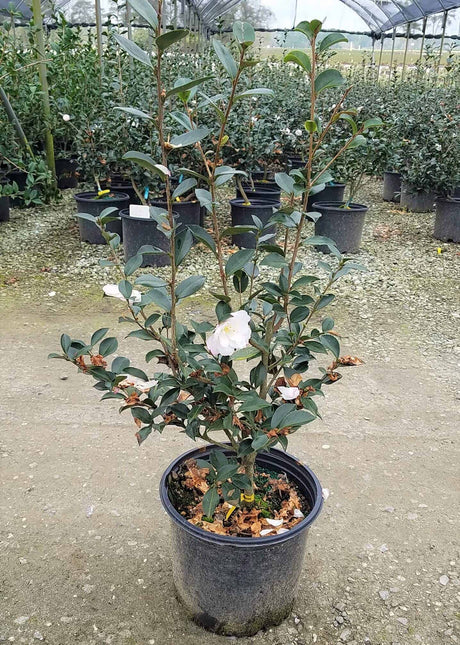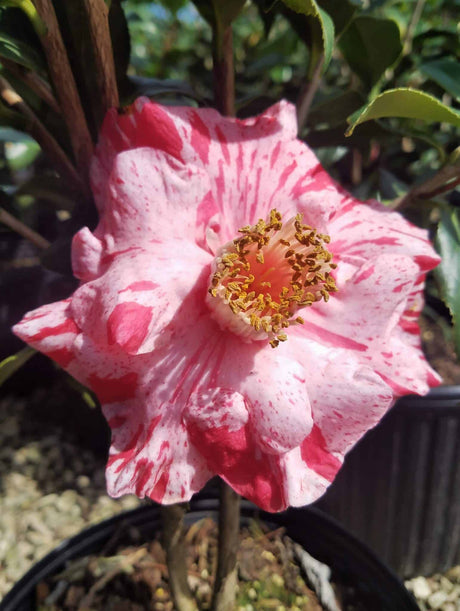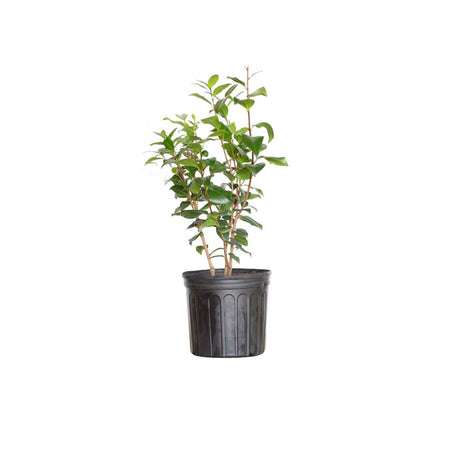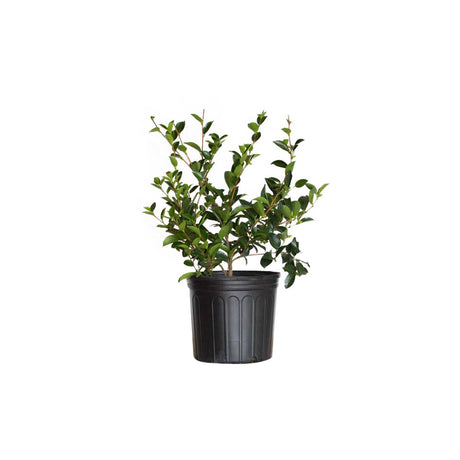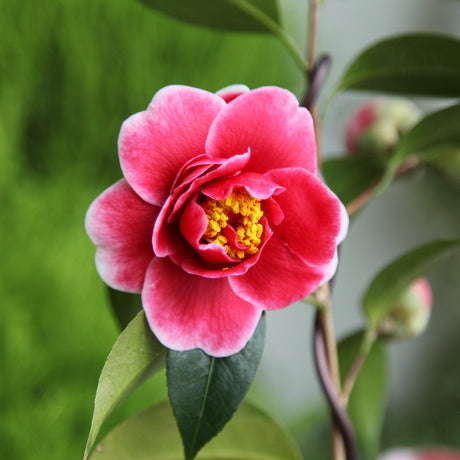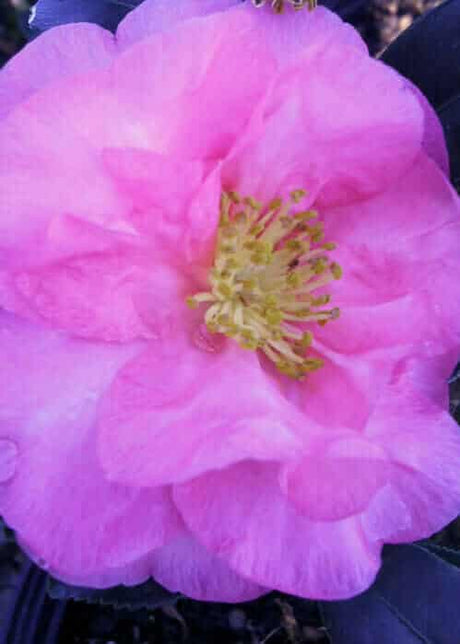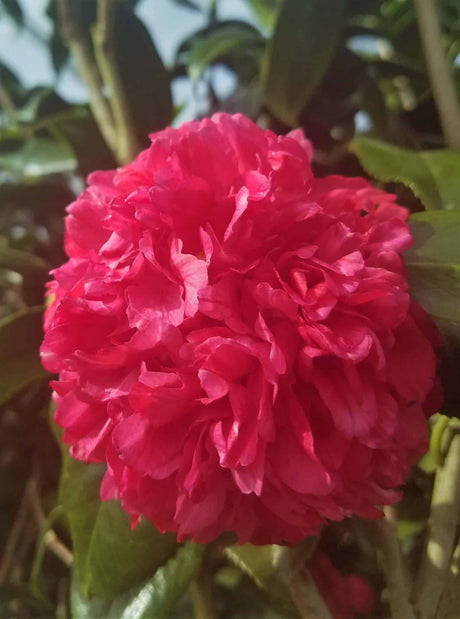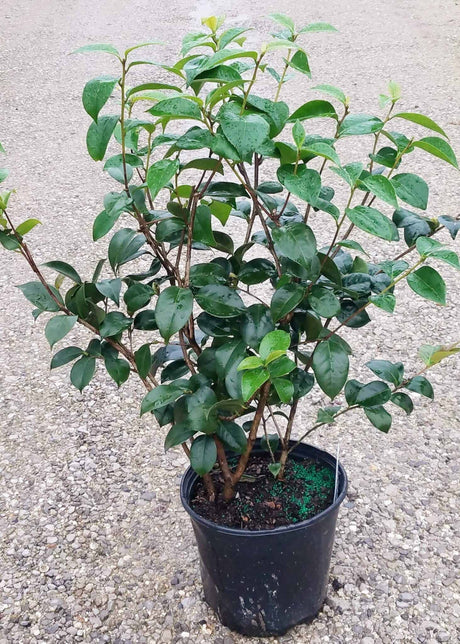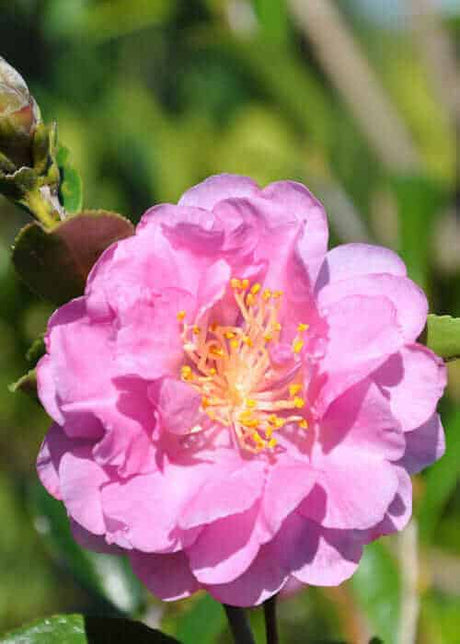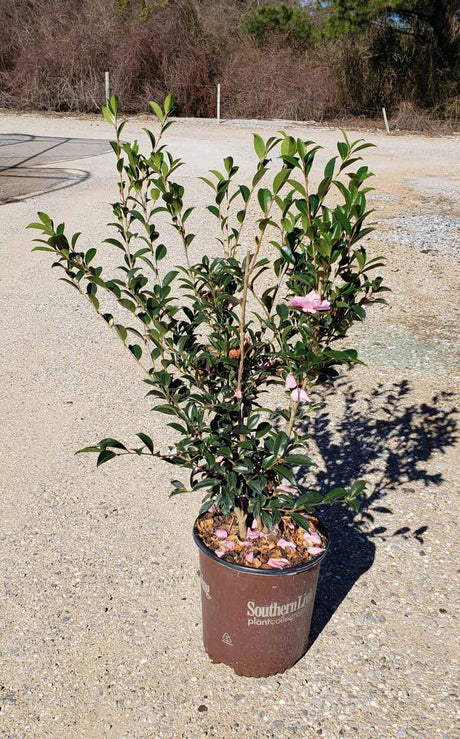FiltersFilter & Sort
Southern Living Plant Collection
October Magic White Shi Shi Camellia (Sasanqua)
From $19.99Unit price /UnavailableVery low stock (1)Southern Living Plant Collection
From $19.98Unit price /UnavailableIn stock (100)Southern Living Plant Collection
Early Wonder Camellia (Japonica)
From $23.81Unit price /UnavailableIn stock (2912)Southern Living Plant Collection
October Magic Orchid Camellia (Sasanqua)
From $19.98Unit price /UnavailableIn stock (21)- Sold out
- Sold out
- Sold out
- Sold out
- Sold out
- Sold out
- Sold out
- Sold out
- Sold out
- Sold out
Camellias are classic beauties with lovely evergreen foliage and magnificent blooms during Fall or winter! They're somewhat synonymous with Gardenias and Azaleas as being Southern landscaping staples. In fact, just these three species were champions of keeping southern gardens and landscapes beautiful every season! Azaleas bloomed in Spring, Gardenias followed with blooms in summer, Camellia sasanqua in Fall, and Camellia japonicas in winter. Things have changed in the gardening world since then, but one thing hasn't. Camellias are just as varied and stunning as ever. Plantsbymail.com's collection includes numerous varieties from the Southern Living Plant Collection and many other Camellia Sasquana and Camellia Japonica varieties.
Why Should I Plant Camellias?
Camellias are an elegant addition to any garden and add winter blooms when other plants are hunkering down for winter.
Many Camellia varieties make for dense and colorful Privacy Screens
Numerous Camellia sasanqua and japonica selections are perfect for screens thanks to their dense foliage and evergreen nature. Additionally, unlike many privacy hedges or screens, a row of these beauties will produce gorgeous camellia flowers! Tall-growing selections like the Alabama Beauty Camellia and October Magic Inspiration Camellia shine in this sort of setting.
There are hundreds of different Camellia colors and growth habits to choose from
There's a Camellia bush for basically every landscape requirement. There are dwarf varieties that reach only 3 feet tall and larger types that get upwards of 15 feet tall. Their blooms come in red, pink, white, bicolor, semi-double, single-form, formal, ruffled, and more! Chances are that you'll have an easy time falling in love with one or a few.
Camellia bushes are consistent landscape elements
Their dark and glossy leaves are some of the most consistent foliage you can plant in your landscape. In favorable conditions, your plants will stay gorgeous and evergreen every season.
What type of Camellia should I plant?
There are two main groups of popular Camellias: Japonica and Sasanqua. There are, of course, different varieties, such as Camellia Sinensis and Camellia Vernalis. However, Sasanqua and Japonica incorporate most of the types on the market today. There are even hybrid varieties which we will cover as well.
About Camellia Sasanqua
- Tend to bloom in late Fall to early winter. Sets flower buds in late summer to early fall
- Smaller leaves than Camellia Japonica varieties
- Heights range from 2-12' tall depending on the species
- Generally smaller blooms than Camellia Japonicas
- Can be sensitive to long periods in sub-freezing temperatures
- More dense, shrubby foliage. Perfect for mixed garden beds, foundation plantings, and hedges/screens.
About Camellia Japonica
- Tend to bloom in winter to early Spring (except for the Early Wonder Camellia, a new variety with pink flowers that blooms in Fall)
- Sets camellia flower buds in the fall
- Larger leaves than Camellia Sasanquas
- Heights range from 6-12+' tall depending on species and growing conditions
- Larger blooms than Sasanquas
- Often slightly harder than Sasanqua varieties
- More tree-like stiff, upright growth that makes an excellent corner foundation planting, specimen, or along property lines
Regarding Hybrid Varieties
There are several Camellia Japonica & Camellia Sasanqua hybrids currently on the market. These varieties tend to have somewhat twisted/curved branches. They make for unique specimens, fantastic foundation plantings, and mind-blowing mixed garden bed elements. Two of our hybrids include the Christmas Carol Camellia and Egao Corkscrew Camellia. We can't rave enough about these beauties; they're truly something unique for your garden and landscape.
Where Should I Plant Camellias?
Camellias thrive in partial sun. Some like a little more sun, some like a little less. They often get a reputation as being shade plants, but we recommend staying away from 100% heavy shade. They need some sun to perform appropriately. Camellia Japonica varieties generally are more shade-friendly, and most types do well with 1-2 hours of direct sun or lightly filtered sun for half of the day. Many sasanqua varieties will do well in these conditions as well. Try them with some shade-tolerant evergreens like Mahonia for fantastic texture and bloom color contrast. Some sasanqua varieties, such as the selections from the October Magic series, can even handle all-day full sun! However, this isn't recommended in areas with harsh summer sun, such as USDA Zones 8b and upwards. When grown in these conditions, your plant will likely experience more foliage stress and some discoloration by the end of summer. However, it will bloom like crazy thanks to the extra sun. All camellias prefer slightly acidic soil with good drainage and regular moisture (not consistently soggy, which can lead to root rot over time).
When Should I Plant Them?
Spring or Fall are both good times to plant camellias. However, in Spring, you should wait until the threat of frost has passed for the year. In Fall, you're generally okay to plant as long as you have a month until your first expected freeze of the year. Planting in the Fall will give your plant time to adjust to its new setting before freezing weather becomes regular. If you live in a zone that essentially never goes below freezing, you can plant almost all year long. However, you may need to provide extra care during summer to ensure that your new plant gets the water it needs to keep up with the heat.
How Do I Plant Them?
First, determine the planting location by considering the requirements of your variety. Then, dig a hole 3 times as wide as the root ball of your plant. Then, mix your native soil with some good-quality, well-drained garden soil or composted manure. Backfill the hole with the soil mixture. Apply 3-4 inches of mulch around the base of your plant to help protect the roots from extreme temperature fluctuation. Afterward, water your new planting 2-3 times per week for the first growing season.
Why Buy Camellias Online from PlantsbyMail.com?
We love our Camellias, and we know you will too. Shop our camellias for sale. When you place an order, we carefully select a healthy, quality specimen and securely ship it to your front door. If you aren't happy with your plant(s), let us know, and we'll do whatever we can to make it right.






